The Little Known History of Fluoride A Behind-the-Scenes Look at a 20th-Century Achievement in Science and Health
chapter 1
The broad overview of fluoridation as one of CDC's public health achievementspublic health achievement
of the 20th century #4
 Fluoridation of
Fluoridation ofDrinking Water to
Prevent Dental Caries
The U.S. Centers for Disease Control and Prevention made quite a contribution to resources for learning about fluoride history and science when they wrote up the Ten Great Public Health Achievements in the 20th Century.
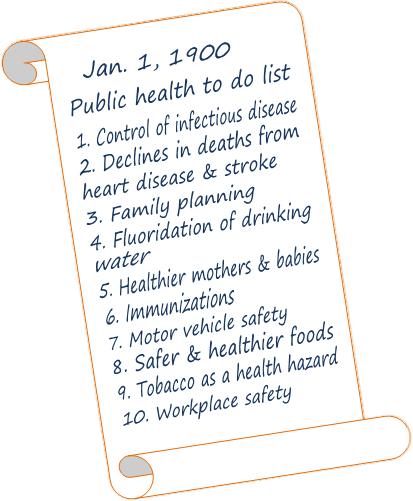
Because one of the 10 achievements they reviewed was about how much the discovery and development of fluoride and fluoridation reduced the rampant amount of tooth decay typical of the time.
They gave us a broad overview of fluoride, fluoridated drinking water, and cavity prevention.
And this review was given in the context of nine other public health measures CDC also judged as vital to our health.
CDC published their review of fluoride and oral health in their premier peer-reviewed journal, Morbidity and Mortality Weekly Report- which is itself a publicly available resource of some of the best public health science in the world.
And they put the whole thing online for any of us to access digitally.
That means you could go read CDC's report on fluoride as one of the top public health achievements yourself. But...
... we have to admit ...
... though it pains us to say it ...
CDC's report is a little ... boring traditional.
Reading it is pretty much like doing homework. It's a whole lot of black and white text. There aren't many pictures. There's some passive voice, an assortment of complex sentences, and more than a bit of jargon ... er, we mean totally necessary scientific vocabulary.
So we've tried to do something a little different with it. We've tried to create an edition of CDC's fourth public health achievement, where we not only dig deeper into the history and science of fluoride, but we also have a little more fun. We're not so serious and proper here. And we have made liberal use of lots of pictures and graphics. Which is particularly good for you as a reader, because even if our dorky jokes fall flat, people's pictures from yesteryear make the history and science come alive :)
Let us be your tour guides to fluoride as one of CDC's
Ten Great Public Health Achievements in the 20th Century.
 Next stop on our tour
Two particularly noteworthy sentences
Next stop on our tour
Two particularly noteworthy sentences
"Fluoridation of community drinking water is a major factor responsible for the decline in dental caries (tooth decay) during the second half of the 20th century."
fluoride as a 20th-century
health achievement And this is what the patterns CDC is talking about look like:
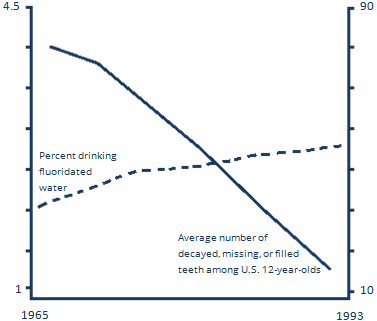 Second half of the 20th century
Second half of the 20th century
NOTE! These are the patterns CDC mentions.
Pattern 1: There was a great decline in tooth decay over the last half of the 20th century. And pattern 2: More and more communities fluoridated their drinking water over that same time period.
But correlation does not equal causation. This graph isn't the smoking gun that proves CDC's statement about fluoride being a major factor in controlling tooth decay in America... this is just a graph of the first few things to know from a whole bunch of science and evidence on the role that fluoride has played in improving America's oral health.
"The history of water fluoridation is a classic example of clinical observation leading to epidemiologic investigation and community-based public health intervention."
health achievement Let's break that down some ... The history of water fluoridation is

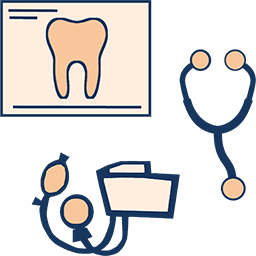

Epidemiology - noun
1. the study of patterns and causes of health and disease in a population.

And community-based public health interventions
are actions we take as a community to protect our health and prevent disease

We like that second sentence from CDC's introduction to fluoride as a great public health achievement. We like it a lot.
We like it because – even though it may not seem like it with all that technical vocabulary – that sentence tells a whole story.
A story of dentists and doctors and nurses and U.S. science agencies and little kids in Michigan. A story of data and patterns, and scientists searching for the causes of those patterns. A story of real world science, not just experiments in a lab. And a story of that data and research and study leading to ... action! Action to improve lives.
We also like that sentence because it encapsulates a core approach in the extraordinary science of public health.
Clinical observation
Doctors &
dentists
observe
lots of
patients
and come
up
with hypotheses
Epidemiology
Meticulous,
methodical,
hardcore science,
analysis, and
in-depth study
Public health intervention
Act on our hard-
won knowledge
to
prevent
disease &
promote health
Where did Drs. Jay and Arnold and all those Michigan kids spitting in school fit in to this story of clinical observation leading to epidemiologic investigation, and public health intervention?
They were right on that second arrow straddling epidemiology and intervention.
Along with local officials and citizens, and their colleagues in the Public Health Service and dental societies and universities, they were making science history in Michigan.
(And they got the historical markers and shout-outs in history blogs and chapters in history books to prove it.)
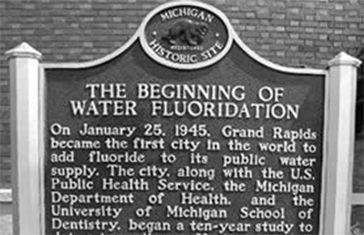
O.K., so that epic petri dish collection Dr. Jay and Dr. Arnold were examining, and the work on fluoridation in Michigan, was on that second arrow. Does that mean there were doctors and dentists who came before them making clinical observations and laying the groundwork of the epidemiology?
Yes, indeed, there were. We've only scratched the surface of who all was involved in the history of fluoride and fluoridation. Decades of research and public health work was done before the 1945 demonstration study in Michigan, and decades of work has been done since – over the course of the whole century (and in recent years, too).
But before we outline those decades of fluoride science history, the next stop on our tour is focused on tooth decay. CDC took the time in their review to get us all on the same page about what tooth decay really is and was like historically, and we're going to do the same in the next chapter.
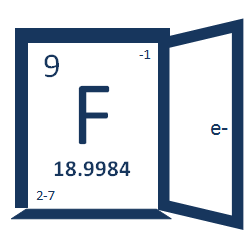



So that means...epidemiologic investigation is a scientific search for
where, why, how, who, and what causes health vs. disease.